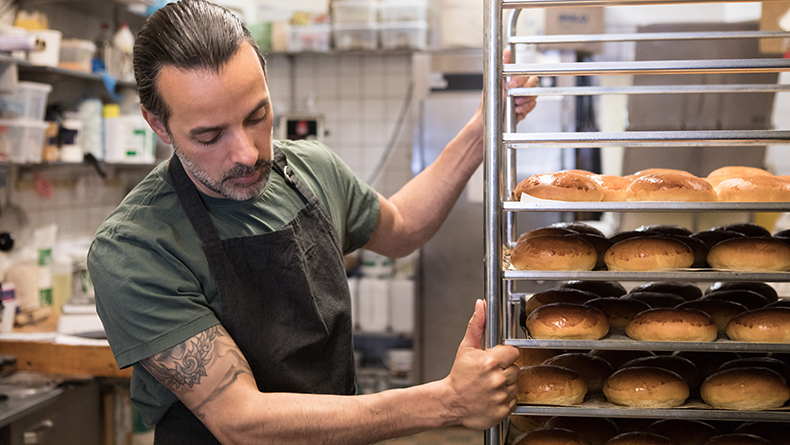AARP Hearing Center
With Pandemic, Low-Wage Workers Face Both Greater Economic and Health Risks
By Jennifer Schramm, May 11, 2020 03:11 PM

As the pandemic wears on, disparities in the workforce are becoming more apparent. Among them are the higher health and financial risks faced by workers in low-wage jobs due to COVID-19. Many of these workers are ages 50 and older.
Here is a look at how the pandemic is impacting lower-wage workers—their income, their health, and their rising concerns about both.
Most at risk of job or income loss. Analysis by the Brookings Institution has found that nationally, 34 percent of workers ages 50+ earn low hourly wages. Already struggling to make ends meet, these workers are now among the most likely to be facing layoffs, furloughs, or pay cuts due to fewer hours. A recent Pew Research survey found that over half of lower-income Americans reported that they or someone in their household had already experienced job or wage loss due to COVID-19. The April Employment Situation data show massive job losses across industry sectors, but the most substantial job losses were in the leisure and hospitality industries, where many low-wage workers are employed. Among workers ages 55 and older, women saw extremely high levels of displacement, potentially due to greater concentrations working in occupations where job losses were most prevalent. Unemployment for women ages 55+ rose sharply, from 3.3 percent in March to 15.5 percent in April.
Concerns about COVID-19 are highest among those with lower incomes. Nevertheless, and despite the historic levels of job loss not seen since the Great Depression, many low-wage workers remain employed, often due to their designation as essential workers. Yet while they are still working, many do so under conditions that put them at high risk of exposure to the virus, and—especially for the many older workers at this income level—potentially severe health complications or even death. Less safe working conditions may be one reason why research shows concerns about contracting or spreading the COVID-19 virus are higher among lower-income Americans. A third of adults with lower incomes said they were very concerned they would get COVID-19 and require hospitalization, compared with only 17 percent of upper-income adults.
Among older workers, the likelihood of earning low wages varies considerably by race and ethnicity. Among White workers ages 50+, 29 percent earn low wages compared with 43 percent of 50+ African American/Black workers and 42 percent of 50+ Asian American workers. Among Hispanic workers ages 50+, over half (54 percent) earn low wages. Meanwhile, the Pew survey found that Black and Hispanic adults are the most concerned about contracting or spreading the COVID-19 virus, and Black adults are most likely to report knowing someone who has been hospitalized or died from it.
Fewer financial resources, fewer choices. Financial stress, a constant for low-wage workers even before the outbreak, has now intensified. For older low-wage workers, worries about layoffs are compounded by the awareness that it will likely take them longer to recover from a job loss. Older workers often face longer spells of unemployment than younger workers, as well as age discrimination. Most low-wage older workers have little to no savings to fall back on. So while some may decide to drop out of the labor market, most of the older low-wage workers who have managed to remain employed will stay on the job. Faced with few options, they will go on working—despite the risks, despite the fear.
For more jobs data:
Find the latest employment data in the AARP Public Policy Institute's (PPI) Employment Data Digest, PPI's monthly review of job trends for those ages 55 and over: https://www.aarp.org/ppi/info-2020/employment-data-digest.html.
Visit https://www.aarp.org/work/ for articles on work and unemployment and job search resources.
































































